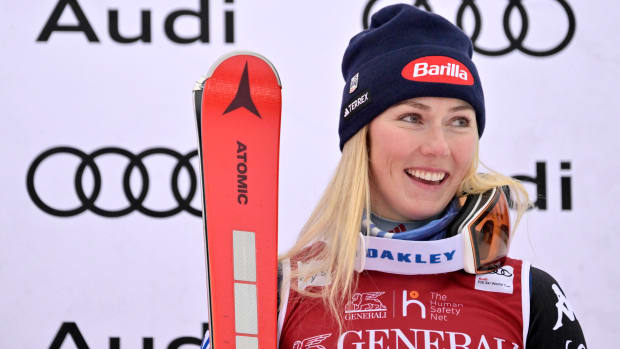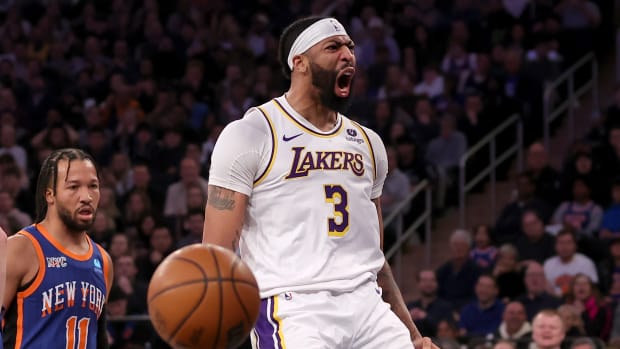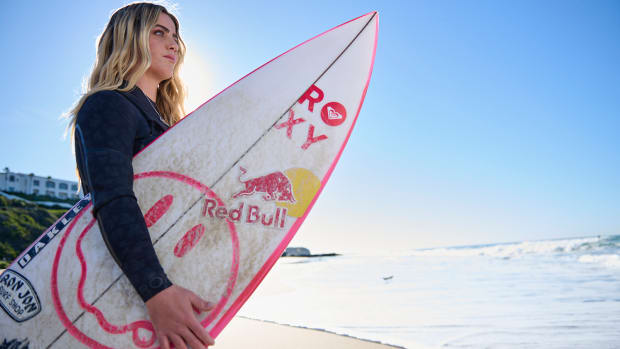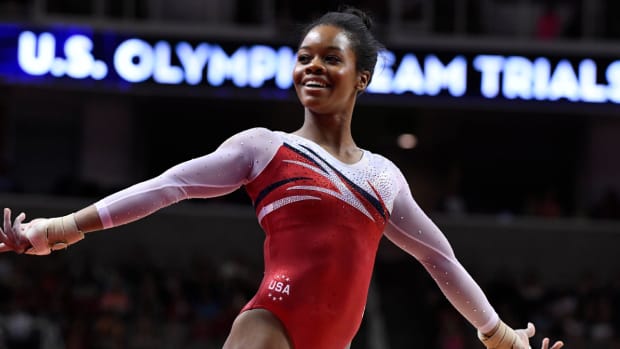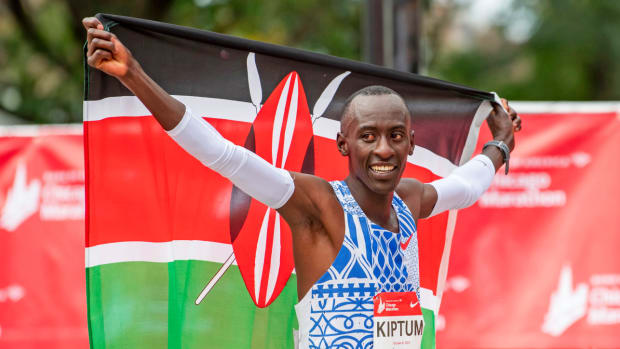Ten questions before men's hockey tournament
SOCHI -- On the eve of the men’s Olympic hockey tournament, the center ring under the IOC’s big top, here are 10 questions to ponder:
What’s the deal with international ice? The Sochi surface is 200-by-100 feet, 15 feet wider than the unfriendly confines of your neighborhood NHL arena. The most common misconception is that North American teams with NHL players have not won an Olympics on the big ice. Wrong. At Salt Lake City 2002, Canada trumped the United States in the final on the same kind of surface that you will see at the Bolshoy Ice Palace. Now that we have debunked -- or is it deboned? -- this canard, it is true the ice is a natural advantage to Europeans, who grew up in hockey’s wide-open spaces. (Since the NHL era in Olympic hockey, neither Canada nor the U.S. has reached a final outside North America.)
As Boolean algebra is to the algebra you learned in eighth grade, the geometry of the big ice is to the geometry of NHL ice.
“It comes into play on the power play and penalty kill,” said Zach Parise, captain of Team USA. “You kinda get set in the North American ways -- always finishing checks, playing in straight lines, going 100 miles per hour all over the ice. You do that on big rinks against European players, it won’t work. They want to pull you out of position, which opens up passing and shooting lanes. Being a little more passive is the better play.”
A shot taken from between the boards and the outside of the faceoff circle might constitute a middling scoring chance in the NHL, but it is essentiallys a bad-angled wing and a prayer at the Olympics. As Team Canada coach Mike Babcock notes, his team needs to get inside the dots to score. Goaltenders also must adjust to different angles, a phenomenon noted by a jet-lagged Carey Price, the Euclid of the crease, after Canada’s first practice. Because of the extra square footage, many teams, fearing that a mistake in positioning will lead to a goal, employ a 1-4, which clogs the neutral zone in much the same way that the sour cream dolloped on everything here clogs the arteries.
As Team Canada assistant coach Ken Hitchcock says, “Big ice is a game of tactics. NHL ice is a game of emotions.”
I really love watching the Olympic hockey tournament but am not a big NHL fan. Why are the Olympics so much better than the other stuff? Unlike big and small ice, this is not really a valid comparison.
The Olympics are a 12-day best-on-best tournament, a hockey phantasmagoria that comes around every four years -- unlike, say, a (yawn) game between the Sabres and the Panthers. You have the biggest stars, the greatest hockey nations, plus Austria, playing a half-dozen games or so. Add five rings, slap on a flag and you’ll probably be transfixed. While some NHL owners think it is insane to break the season to accommodate the IIHF and IOC at a time when the major competition is pitchers and catchers doing calisthenics -- Flyers owner Ed Snider recently shredded NHL participation -- players will jump through Olympic hoops to play. Team Canada GM Steve Yzerman essentially played in the Olympics on one leg in 2002. (Incidentally, Yzerman says he hopes that the NHL will continue to participate, even with the 2018 Games being in non-time zone-friendly South Korea.)
At least once every four years, the lust for the gold medal exceeds even the passion for the paycheck.
MUIR: Pretenders, contenders and medal picks
Aren’t a lot of countries missing their top players? As in football, attrition is a part of the deal. (The difference is that the NFL explains, more or less, the injuries. In hockey, injuries are designated as upper-body and lower-body. Presumably the flu is an inner-body injury.)
Anyway, many of the medal contenders are doing without some stalwarts. Sweden will be without center Henrik Sedin (the passing Sedin, as opposed to winger Daniel, the shooting Sedin), and its space eater in front of the net, the mulish Johan Franzen. Finland is bereft of its top two centers, the estimable Mikko Koivu and Valtteri Filppula. Slovakia made a bold run to the Vancouver 2010 semifinals, but it will muddle through the Sochi tournament without dynamic scorer Marian Gaborik, who has been replaced on the roster by Branko Radivojevic. Roll that name around on the tongue. Radivojevic personifies the difference between Slovakia and Canada. When Steven Stamkos’ broken tibia did not mend sufficiently for him to go to Sochi, Yzerman spackled the hole with his Lightning captain, Martin St. Louis, who led the NHL in scoring last season.
The big U.S. injury is to GM David Poile, who was struck by a puck that had been shot by his captain in Nashville, Shea Weber, who also happens to play for Team Canada. When the bleary-eyed U.S. management and coaching groups arrived at Bolshoy on Monday, I kidded Ray Shero, the associate filling in for Poile, that he had pulled an Alexander (“I’m in charge here.”) Haig. Coach Dan Bylsma, a proud graduate of Bowling Green and the author of three books, caught the reference. Nice to know Team USA has a coach whose knowledge of history extends beyond which team won the 1971 Stanley Cup.
What should I make of these stories from Sochi about pre-tournament line combinations? Remember, a hockey lineup is not the Rosetta Stone. Like Kardashian marital statuses, line combinations and defense pairings are fluid.
In the whoosh of an Olympic tournament, nations invariably start with groupings that have a certain comfort level. For example, Maple Leafs wingers Phil Kessel and James van Riemsdyk will bookend the U.S. line centered by the Sharks’ Joe Pavelski, who played with Kessel in Vancouver 2010. Penguins defensemen Brooks Orpik and Paul Martin will kill penalties together for Team USA. Alex Ovechkin will shift back to left wing and reunite with right winger -- and former Capitals linemate -- Alex Semin for Russia. Like Noah’s Ark, Canada selected a team grounded in two-by-two: Pittsburgh linemates Sidney Crosby and Chris Kunitz; Ducks linemates Corey Perry and Ryan Getzlaf; and Blues defensemen Alex Pietrangelo and Jay Bouwmeester.
But chemistry experiments can blow sky high. In 2010, Patrice Bergeron, an old world junior tournament linemate of Crosby's, lasted one period as the Kid’s right wing, and eventually played his way down to the role of spare forward. Drew Doughty, Canada’s seventh defenseman at the start of the tournament, wound up as a top-pair guy.
So what is the format? Exactly like Vancouver 2010. There are three groups of four teams. The group winners all advance directly to the quarterfinals, along with the next best team (based on points). Then the other eight play in qualification games, with the winners advancing to the quarters. (No one is eliminated in the round-robin. Just like Little League!) Given its group, a team like Canada -- “A work in progress,” adjudges Babcock -- can ease into the tournament with matches against Norway and Austria before meeting the redoubtable Finns. Team USA has no such luxury, starting with dangerous Slovakia and then Russia before breathing a little easier against Slovenia. Being obliged to play an additional game before the quarters actually can be an advantage in a tournament in which teams often need time to congeal. Canada, which was beaten soundly by the Americans in the round-robin, used a qualification match against Germany as a springboard into the final three games in 2010.
How much will home ice matter to the Russians? In four major tournaments at home (two world championships, two world juniors) this century, no Russian team has reached a final.
But patriotism can be infectious. Team Russia already has received three ovations … and that was just in the introductory press conference on Tuesday.
Ovechkin seems more at ease than he did four years ago in Vancouver, and Russia's top six forwards are spectacular. Against the Russians, opponents are going to need two shutdown defense pairs – one against Pavel Datsyuk’s line and the other against Evgeni Malkin’s. (Selecting defense pairing against the top two Russian lines is like choosing between a root canal or a tax audit: either way, the experience figures to be unpleasant.) The goaltending has been upgraded -- the duo of Semyon Varlamov and Sergei Bobrovsky trumps Evgeni Nabokov from four years ago -- but the defense is middling to underwhelming. Andrei Markov, the 35-year-old, thinks the game at 45 rpm, but his surgically repaired knees spin at 33 1/3. He and Canadiens partner, Alexei Emelin, have not played inspiring hockey in recent weeks. Slava Voynov could emerge as the Russians best defenseman.
But this fortnight is not Rotisserie hockey. Forget the pedigree. If you look at the history of defensemen in the Olympics' NHL era, some unlikely characters have emerged on big ice as towering blueliners. In 1998, Jiri Slegr of the Czech Republic, who played 622 games for six NHL franchises, was the best defenseman in the tournament. In Turin 2006, 35-year-old Kenny Jonsson, the former Islanders blueliner, who was playing for a second-tier Swedish team at the time, outshone Nicklas Lidstrom for the Olympic champions.
So who will be the surprising stars in Sochi? Let’s stick to the young breakout stars, if you don’t mind.
Given Finland’s chasm in the middle, coach Erkka Westlund has elevated the youngest player in the tournament, Aleksander Barkov, to his No. 1 line. Barkov will have all the ice time he can handle, giving the Panthers rookie more of an opportunity to leave his imprint.
On the mobile, talented and relatively unknown U.S. defense, the blossoming star could be the fabulous Cam America. His given name is Cam Fowler, but the 22-year-old, who was born in Ontario, has adopted a red-white-and-blue alter ego … if only to bug his teammates on the Ducks, Perry and Getzlaf, who play for Canada. NBC definitely should have a Cam America Cam on the slick Fowler, a superb skater with finely honed offensive instincts who has grown more responsible in his own end of the ice.
Add one more name: Olli Maatti, the precious Finnish defenseman who is a minor sensation in his rookie season with the Penguins. That’s Maatti with two “a’s”, two “t’s” and no conspicuous flaws.
Isn’t goaltending the key to an Olympic gold? Two of the three NHL era Olympics on international ice have been goaltenders’ tournaments: 1998 (the Czech’s Dominik Hasek) and 2006 (Sweden’s Henrik Lundqvist). In Vancouver, Team USA’s Ryan Miller was on the cusp of being a national figure when Crosby beat him for the overtime winner in the final. Miller was the star of the tournament, but no good deed goes unpunished. He now gets to play in Buffalo.
The goaltender is the mythic centerpiece in America’s preferred hockey tableau, maybe because the job actually merits the adulation, or maybe because it is the easiest position to dope out on the whirling kaleidoscope of the rink. (Even Ray LeBlanc, in Albertville 1992, briefly was portrayed as the second coming of Frankie Brimsek.) Team USA has the best goaltending duo, Miller and Jonathan Quick, which might prove significant. (Bylsma is not tipping his hand on who will start the opener.). In Canada’s two most recent gold medal triumphs, the Game 1 starter -- in Salt Lake City, Curtis Joseph, and in Vancouver, Martin Brodeur -- was not in net for the championship match.
Meanwhile the goalie obsession has spread to Canada, mostly because the position has been in decline the past few years – especially at the junior level. The selection of Canada’s goalies was a national parlor game for more than a year until Price and Roberto Luongo were tabbed as the top two. The angst is fading with Price’s solid season in Montreal, which was marked by a terrific Sochi sendoff: three wins, a 1.00 goal against average and a .971 save percentage.
Do you expect some darkhorse team to do some damage? Finland’s venerable Teemu Selanne predicts surprises. Like forecasting sunshine in Anaheim, there is an excellent chance he will be right. But unlike Belarus’ run in 2002, and the 2006 Swiss upset of Canada -- goalie Martin Gerber was otherworldly -- it is tough to pinpoint where it will happen this year. Besides, a victory by any of the top seven teams over another -- we’re talking Canada, the U.S., Russia, Sweden, Czech Republic, Finland and Slovakia -- does not qualify as the earth-shaking.
So who wins? After nodding for weeks in the direction of Sweden and its sublime defense, we are bailing before the puck drops. The injury situation has nudged us off the Tre Kroner and onto the default team in almost any tournament, Canada.
The dream final, however, is Russia against the United States.
Edward Snowden drops the ceremonial puck.
Men's Olympic hockey schedule with TV times
Wed 2/12 | Czech Repub vs. Sweden | 12 PM ET USA, SNET1 |
| Latvia vs. Switzerland | 12 PM ET, MSNBC |
Thu 2/13 | Finland vs. Austria | 3 AM ET, SNET, NBCSN |
| Russia vs. Slovenia | 7:30 AM ET, CBC, MSNBC |
| Slovakia vs. USA | 7:30 AM ET, TSN,NBCSN |
| Canada vs. Norway | 12 PM ET, CBC, USA |
Fri 2/14 | Czech Repub vs. Latvia | 3 AM ET, TSN, MSNBC |
| Sweden vs. Switzerland | 7:30 AM ET, TSN, NBCSN |
| Canada vs. Austria | 12 PM ET, CBC, USA |
| Norway vs. Finland | 12 PM ET MSNBC, SNET |
Sat 2/15 | Slovakia vs. Slovenia | 3 AM ET, SNET, NBCSN |
| USA vs. Russia | 7:30 AM ET, CBC, NBCSN |
| Switzerland vs. Czech Repub | 12 PM ET, NBCSN |
| Sweden vs. Latvia | 12 PM ET, USA |
Sun 2/16 | Austria vs. Norway | 3 AM ET, TSN2, USA |
| Russia vs. Slovakia | 7:30 AM ET, USA |
| Slovenia vs. USA | 7:30 AM ET, NBCSN |
| Finland vs. Canada | 12 PM ET, CBC, USA |
Tue 2/18 | Qualification Round | 3 AM, 7: 30 AM, 12 PM (2) ET |
Wed 2/19 | Quarterfinal Round | 3 AM, 7: 30 AM 12 PM (2) ET |
Fri 2/21 | Semifinal Round | 7 AM, Noon ET |
Sat 2/22 | Bronze medal game | 10 AM ET |
Sun 2/23 | Gold medal game | 7 AM ET, NBC |


